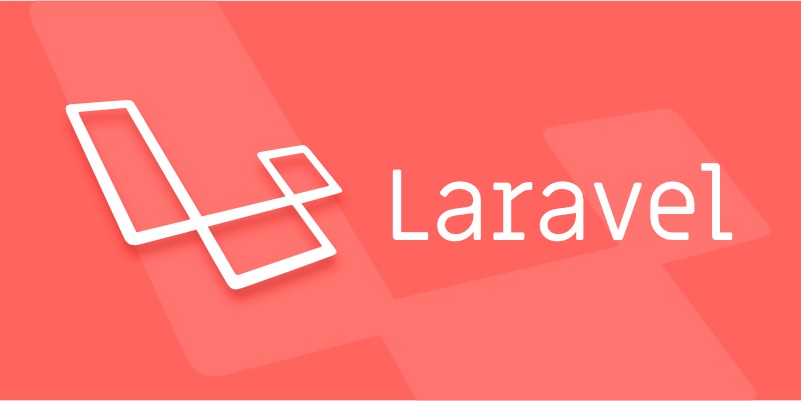A fallback route in Laravel is defined using Route::fallback() and should be placed after all other routes to catch unmatched URLs. 1. It serves as a safety net by returning custom responses like views or JSON when no route matches. 2. It does not handle HTTP exceptions like 500 errors, which are managed via the exception handler. 3. It should be tested with truly undefined URLs and is especially useful for SPAs or improving user experience on invalid requests.

In Laravel, a fallback route is a special kind of route that gets executed when no other defined routes match the incoming request. It’s basically your app’s safety net — if someone hits a URL that doesn’t exist or isn’t handled by any of your defined routes, Laravel can respond gracefully instead of just failing.

How to Define a Fallback Route
Laravel makes it easy to define a fallback route using the Route::fallback() method inside your route files (usually in routes/web.php for web requests).
Here's a basic example:

Route::fallback(function () {
return 'Sorry, the page you are looking for does not exist.';
});This will catch any unmatched URLs and return a simple message. You can also return a view or perform more complex logic:
Route::fallback(function () {
return view('errors.404');
});Just keep in mind:

- The fallback route should be defined after all other routes, because Laravel processes routes in the order they're defined.
- It only works if there's no matching route at all — so if you have a wildcard route (
Route::get('/{any}', ...)) before the fallback, the fallback will never run.
When Should You Use a Fallback Route?
A fallback route is especially useful in scenarios like:
- Handling 404 errors on the frontend with a custom view.
- Building single-page applications (SPAs) where Laravel serves the frontend and the client router handles navigation.
- Catching unexpected or malformed URLs gracefully, improving user experience.
However, it's not meant to replace proper error handling. For example, Laravel has dedicated tools like exception handlers and middleware for dealing with things like authentication failures or server errors.
Also note: fallback routes don't catch HTTP exceptions like 500 errors. That’s what your exception handler (App\Exceptions\Handler) is for.
Common Mistakes and Tips
Sometimes developers expect the fallback route to work in cases where it won’t. Here are a few gotchas:
- ? Placing the fallback route before dynamic routes — it'll catch everything too early.
- ? Expecting it to handle 5xx errors — those need to be managed elsewhere.
- ? Always test with a URL that truly doesn't match any defined route.
If you're building an API, you might want to return a JSON response from your fallback:
Route::fallback(function () {
return response()->json([
'error' => 'Resource not found.'
], 404);
});That way, clients consuming your API get consistent responses even when hitting invalid endpoints.
So yeah, fallback routes are handy but limited in scope. They help clean up the edges of your routing logic without much effort — just make sure you understand how and when they apply.
The above is the detailed content of What is a Fallback Route in Laravel?. For more information, please follow other related articles on the PHP Chinese website!

Hot AI Tools

Undress AI Tool
Undress images for free

Undresser.AI Undress
AI-powered app for creating realistic nude photos

AI Clothes Remover
Online AI tool for removing clothes from photos.

Clothoff.io
AI clothes remover

Video Face Swap
Swap faces in any video effortlessly with our completely free AI face swap tool!

Hot Article

Hot Tools

Notepad++7.3.1
Easy-to-use and free code editor

SublimeText3 Chinese version
Chinese version, very easy to use

Zend Studio 13.0.1
Powerful PHP integrated development environment

Dreamweaver CS6
Visual web development tools

SublimeText3 Mac version
God-level code editing software (SublimeText3)

Hot Topics
 What are policies in Laravel, and how are they used?
Jun 21, 2025 am 12:21 AM
What are policies in Laravel, and how are they used?
Jun 21, 2025 am 12:21 AM
InLaravel,policiesorganizeauthorizationlogicformodelactions.1.Policiesareclasseswithmethodslikeview,create,update,anddeletethatreturntrueorfalsebasedonuserpermissions.2.Toregisterapolicy,mapthemodeltoitspolicyinthe$policiesarrayofAuthServiceProvider.
 How do I install Laravel on my operating system (Windows, macOS, Linux)?
Jun 19, 2025 am 12:31 AM
How do I install Laravel on my operating system (Windows, macOS, Linux)?
Jun 19, 2025 am 12:31 AM
Yes,youcaninstallLaravelonanyoperatingsystembyfollowingthesesteps:1.InstallPHPandrequiredextensionslikembstring,openssl,andxmlusingtoolslikeXAMPPonWindows,HomebrewonmacOS,oraptonLinux;2.InstallComposer,usinganinstalleronWindowsorterminalcommandsonmac
 What are controllers in Laravel, and what is their purpose?
Jun 20, 2025 am 12:31 AM
What are controllers in Laravel, and what is their purpose?
Jun 20, 2025 am 12:31 AM
The main role of the controller in Laravel is to process HTTP requests and return responses to keep the code neat and maintainable. By concentrating the relevant request logic into a class, the controller makes the routing file simpler, such as putting user profile display, editing and deletion operations in different methods of UserController. The creation of a controller can be implemented through the Artisan command phpartisanmake:controllerUserController, while the resource controller is generated using the --resource option, covering methods for standard CRUD operations. Then you need to bind the controller in the route, such as Route::get('/user/{id
 How do I customize the authentication views and logic in Laravel?
Jun 22, 2025 am 01:01 AM
How do I customize the authentication views and logic in Laravel?
Jun 22, 2025 am 01:01 AM
Laravel allows custom authentication views and logic by overriding the default stub and controller. 1. To customize the authentication view, use the command phpartisanvendor:publish-tag=laravel-auth to copy the default Blade template to the resources/views/auth directory and modify it, such as adding the "Terms of Service" check box. 2. To modify the authentication logic, you need to adjust the methods in RegisterController, LoginController and ResetPasswordController, such as updating the validator() method to verify the added field, or rewriting r
 How do I use Laravel's validation system to validate form data?
Jun 22, 2025 pm 04:09 PM
How do I use Laravel's validation system to validate form data?
Jun 22, 2025 pm 04:09 PM
Laravelprovidesrobusttoolsforvalidatingformdata.1.Basicvalidationcanbedoneusingthevalidate()methodincontrollers,ensuringfieldsmeetcriterialikerequired,maxlength,oruniquevalues.2.Forcomplexscenarios,formrequestsencapsulatevalidationlogicintodedicatedc
 How do I escape HTML output in a Blade template using {{{ ... }}}? (Note: rarely used, prefer {{ ... }})
Jun 23, 2025 pm 07:29 PM
How do I escape HTML output in a Blade template using {{{ ... }}}? (Note: rarely used, prefer {{ ... }})
Jun 23, 2025 pm 07:29 PM
InLaravelBladetemplates,use{{{...}}}todisplayrawHTML.Bladeescapescontentwithin{{...}}usinghtmlspecialchars()topreventXSSattacks.However,triplebracesbypassescaping,renderingHTMLas-is.Thisshouldbeusedsparinglyandonlywithfullytrusteddata.Acceptablecases
 Selecting Specific Columns | Performance Optimization
Jun 27, 2025 pm 05:46 PM
Selecting Specific Columns | Performance Optimization
Jun 27, 2025 pm 05:46 PM
Selectingonlyneededcolumnsimprovesperformancebyreducingresourceusage.1.Fetchingallcolumnsincreasesmemory,network,andprocessingoverhead.2.Unnecessarydataretrievalpreventseffectiveindexuse,raisesdiskI/O,andslowsqueryexecution.3.Tooptimize,identifyrequi
 How do I mock dependencies in Laravel tests?
Jun 22, 2025 am 12:42 AM
How do I mock dependencies in Laravel tests?
Jun 22, 2025 am 12:42 AM
TomockdependencieseffectivelyinLaravel,usedependencyinjectionforservices,shouldReceive()forfacades,andMockeryforcomplexcases.1.Forinjectedservices,use$this->instance()toreplacetherealclasswithamock.2.ForfacadeslikeMailorCache,useshouldReceive()tod






